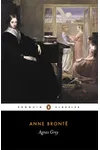Picture a quiet Yorkshire parsonage buzzing with creativity, where a young woman penned stories that shook Victorian England—meet Anne Brontë! The youngest of the famous Brontë siblings, Anne was a novelist and poet whose sharp wit and unflinching realism crafted timeless works like Agnes Grey and The Tenant of Wildfell Hall. Often overshadowed by her sisters Charlotte and Emily, Anne’s bold exploration of social issues and moral courage still captivates readers today.
With a life cut tragically short at 29, Anne’s legacy endures through her unique voice—ironic, grounded, and fiercely principled. Ready to dive into the world of this understated literary gem? Let’s explore her journey!
The Making of Anne Brontë
Born on January 17, 1820, in Thornton, Yorkshire, Anne was the youngest of six Brontë siblings. Raised in the isolated village of Haworth, she grew up surrounded by books, moors, and the imaginative games she played with Charlotte, Emily, and Branwell. After their mother’s death and the loss of two sisters, Anne’s resilience shone. She studied at home, devouring literature and developing a keen sense of observation that later defined her writing. At 19, she became a governess, an experience that fueled her empathy for women’s struggles and inspired her debut novel.
Anne Brontë’s Unforgettable Stories
Anne’s literary career began with poetry, published under the pseudonym Acton Bell alongside her sisters’ work in 1846. Her first novel, Agnes Grey (1847), drew from her governess days, offering a realistic portrayal of a young woman’s quiet strength amid hardship. Unlike the romantic intensity of her sisters’ novels, Anne’s style was understated yet piercing, blending irony with moral clarity.
Her second novel, The Tenant of Wildfell Hall (1848), was a groundbreaking work. Often considered one of the first feminist novels, it tackled domestic abuse, alcoholism, and women’s independence through the story of Helen Graham, a mysterious artist fleeing a toxic marriage. Its bold themes shocked Victorian readers, and Anne’s unflinching honesty sparked controversy. Her prose, laced with sharp social commentary, set her apart as a fearless voice in 19th-century literature.
Anne’s works stand out for their realism and ethical depth. While Charlotte’s Jane Eyre and Emily’s Wuthering Heights leaned on gothic drama, Anne grounded her stories in everyday struggles, making her characters’ triumphs feel profoundly human. Her ability to weave social critique into compelling narratives remains a hallmark of her genius.
Why Anne Brontë Matters
Anne Brontë’s influence extends far beyond her brief life. Her novels challenged Victorian norms, advocating for women’s autonomy and exposing societal flaws with a clarity that resonates today. The Tenant of Wildfell Hall inspired later feminist writers, and her realistic style paved the way for modern social novels. Though initially underappreciated, Anne’s work has gained recognition for its courage and insight, cementing her as a vital voice in English literature.
Her legacy also lies in her quiet defiance. In an era that prized women’s silence, Anne spoke truth through her pen, proving that even the softest voices can echo through time. Scholars and readers continue to celebrate her as a trailblazer who dared to write authentically.
About Anne Brontë
- Born: January 17, 1820, Thornton, Yorkshire, England
- Key Works: Agnes Grey (1847), The Tenant of Wildfell Hall (1848)
- Pseudonym: Acton Bell
- Died: May 28, 1849, Scarborough, England
Snag The Tenant of Wildfell Hall and dive into Anne Brontë’s bold, brilliant world! Her stories of resilience and truth are as gripping now as they were in Victorian England. Which Anne Brontë tale will you explore first?





